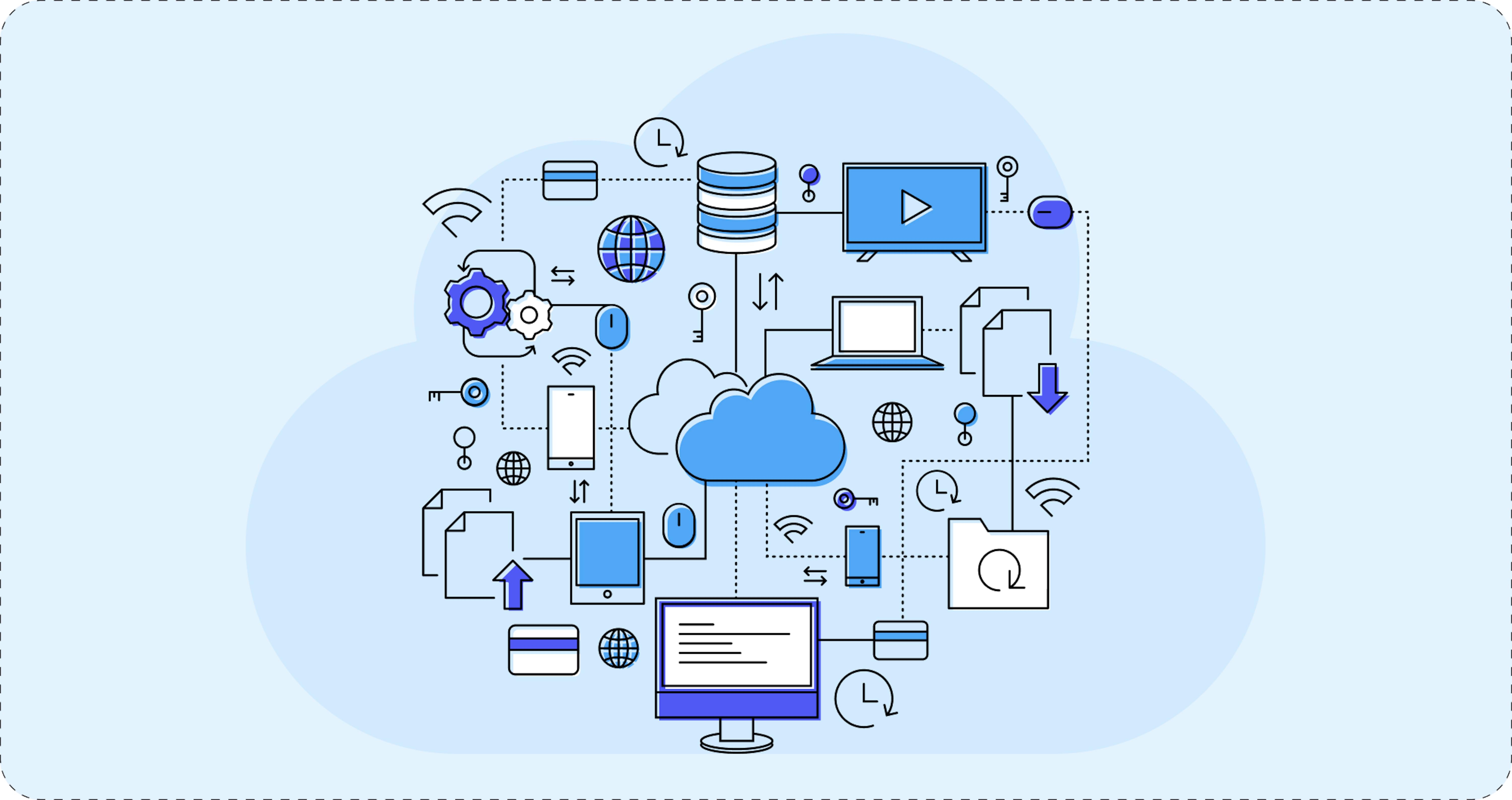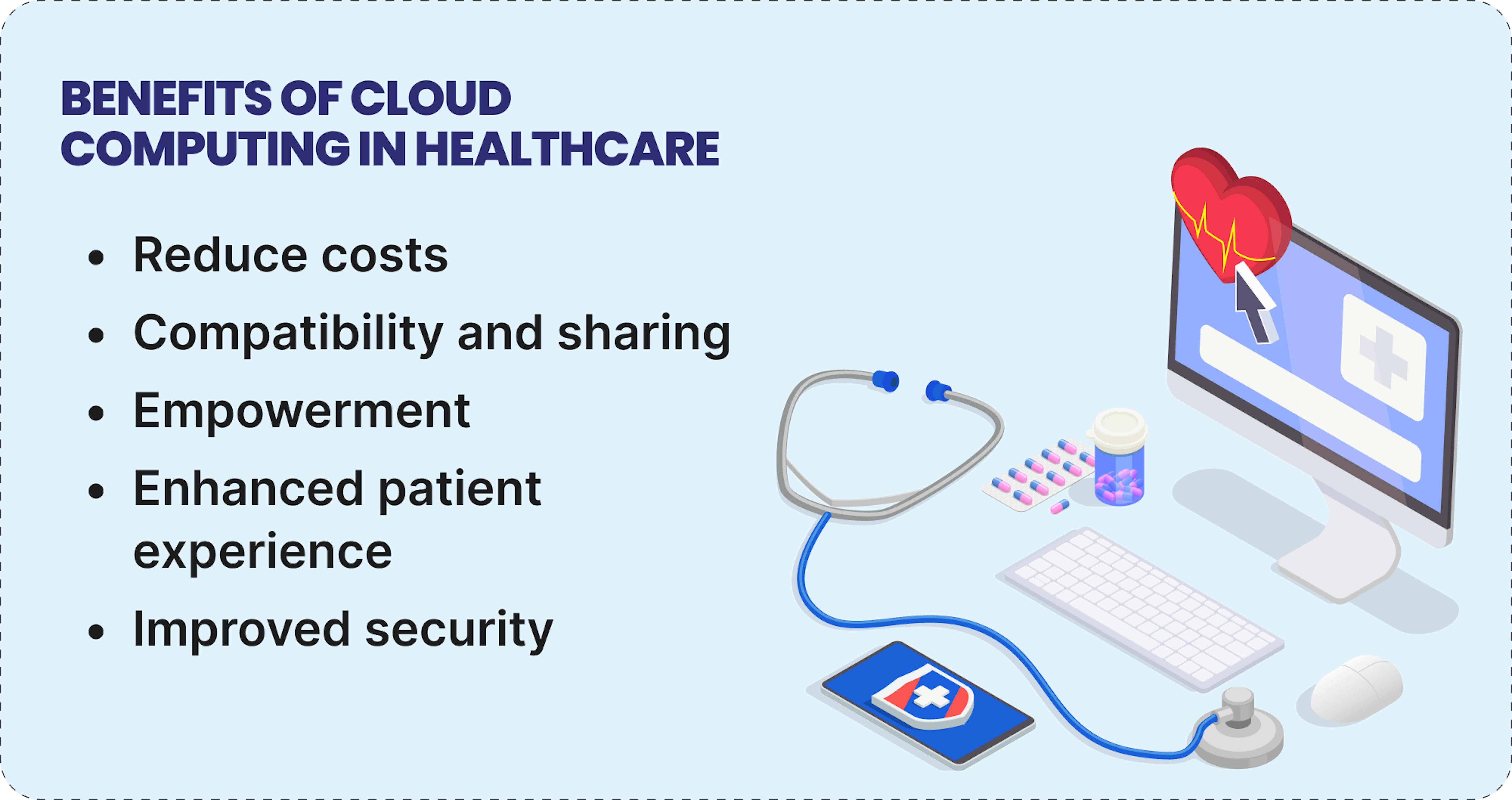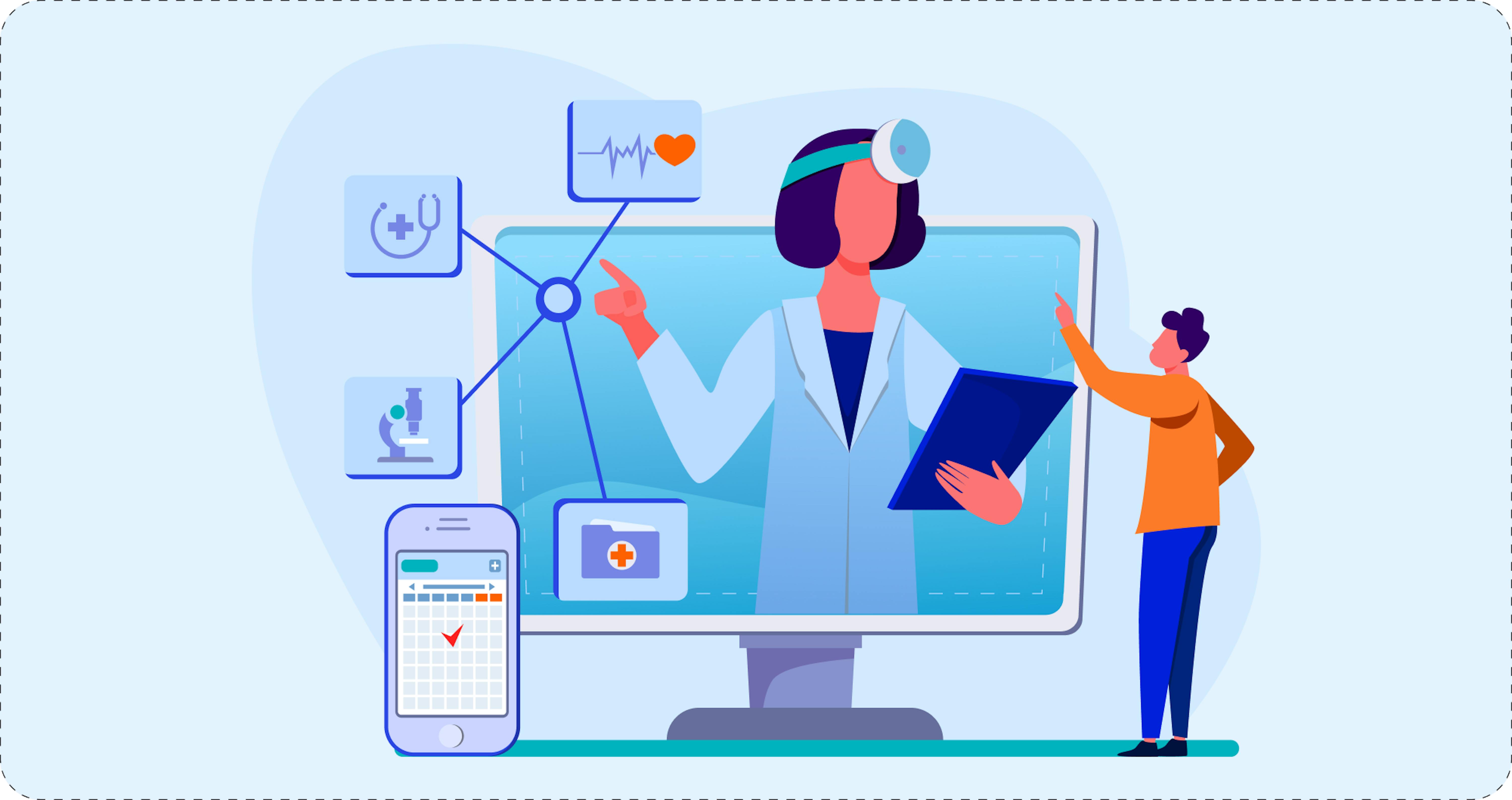The healthcare industry is experiencing many benefits from technological advancements, including robotics, patient health monitoring, and cloud computing. Healthcare providers and patients are experiencing the life-saving and efficiency-driving possibilities that come from these new tools. At the heart of many of them is cloud computing technology, which enables 24/7 access to healthcare data for providers worldwide and gives patients more ownership over their health.
By leveraging cloud computing, healthcare organizations can streamline workflows to ensure patients and healthcare staff can work and recover in positive and supportive environments. This technology has become a cornerstone for businesses and organizations focused on diagnosis and treatment, enabling them to improve patient outcomes and enhance the overall quality of care. For instance, the Lean Six Sigma approach in healthcare relies heavily on cloud computing to achieve its goals of process improvement and efficiency. By harnessing the power of cloud computing, healthcare providers can unlock new possibilities for delivering high-quality, patient-centered care.
This article will examine cloud computing and its applications in the healthcare industry to understand the specific benefits it can bring to providers and patients. We'll also describe different use cases and best practices for implementing cloud solutions to ensure an ongoing stream of benefits for all those involved.
Cloud computing in the healthcare industry

Before, data and applications had to be stored in physical "containers," such as CDs, to be used. Transferring this data meant bringing a physical copy to another location. Now, cloud computing technology allows users to store and transfer data, applications, and resources without maintaining local servers or personal devices in a physical location. With the enormous amounts of data involved with patient care, the healthcare industry is fertile ground for cloud applications. Data in a cloud is available to multiple users from various locations at any time. Cloud computing provides the computational power and storage requirements to ensure high availability and minimize downtime and data loss. In healthcare, cloud computing is used to store, process, and manage health-related data, which may come from remote patient monitoring systems. With the democratization of access to data and empowerment of patients serving as key purposes of cloud computing in healthcare, the applications provide access to patients and providers.
Types of cloud deployment models
An important term in cloud computing is deployment, which refers to how services are made available to users. There are four main types:
- Public cloud: Services are delivered over the public internet and shared across multiple organizations. Examples include Amazon Web Services (AWS), Microsoft Azure, and Google Cloud Platform (GCP).
- Private cloud: Services are maintained on a private network and used exclusively by a single organization. This model offers enhanced security and control but requires more resources to manage.
- Hybrid cloud: Combines public and private clouds, allowing data and applications to be shared between them. This model provides flexibility, scalability, and more deployment options, balancing control and convenience.
- Community cloud: Shared infrastructure is used by several organizations with common interests or requirements, such as compliance or security standards. It can be managed internally or by a third party and offers a collaborative approach with shared costs and resources.
These deployment models cater to different needs and preferences regarding control, security, scalability, and cost. The same options are available to healthcare providers; however, it’s important to remember that strict regulations, such as HIPAA, define who has access to what kind of health information. Therefore, understanding the difference between these options and what stakeholders can see or not is essential to avoid any negative repercussions from regulatory bodies when implementing cloud computing solutions.
Benefits of cloud computing in healthcare
As noted above, one of the key benefits and missions of cloud computing in medicine is to make health-related data instantly accessible to patients and doctors. Besides this, other advantages include:

Reduced costs of healthcare
Storing physical copies of patient data requires storage space and infrastructure that can be costly to maintain. Human employees need to be on hand to find documentation and maintain the storage environment. By removing the need for physical storage, healthcare providers and patients will enjoy savings on their services. Cloud computing also provides healthcare businesses and organizations with flexible and cost-efficient scalability. If the number of patient records and other data increases or decreases, they can scale up or down depending on demand. Scaling becomes more cost-effective and doesn't hurt providers who want to grow.Compatibility and sharing
Data in the cloud can be accessed anywhere by those with the right credentials and permissions. If a patient is away from their primary doctor or hospital network and requires medical assistance, their information will be readily available to providers on the scene. Doctors can share information with colleagues to gain better insights into diagnosis and treatment. This results in timely and accurate care.Empowerment
Patients will feel more in control of their health when they have 24/7 access to their medical data. They won't need to rely on a doctor's ability to translate lab results when they can see visuals and ask questions when they don't understand a number or figure. Furthermore, cloud data in healthcare empowers patients to take a more active role in critical health decisions, such as surgery or extensive treatment options.Enhanced patient experience
In addition to empowering patients through direct access to their medical data, cloud computing can also improve their overall experience at a healthcare facility. For example, patients don't have to make calls or extra visits to obtain their records, nor do they have to wait for the information to be found. They can come to doctor's appointments informed and ready to ask questions instead of relying on the doctor to tell them about test results or other findings.Improved security
Security is an important issue in the healthcare industry due to the amount of sensitive data involved. Cloud computing adds an extra layer of protection from threat actors and can proactively inform providers about suspicious access or breach attempts.
Cloud computing is transforming the healthcare industry by providing scalable, efficient, and secure solutions for various applications. Here are three significant use cases of cloud computing in healthcare:
Healthcare cloud applications

The number of use cases for cloud computing in healthcare grows along with the technology's capabilities and creative treatment approaches. Some of the most common applications are:
Remote patient monitoring
Cloud computing facilitates remote patient monitoring, allowing healthcare providers to track patients' health metrics in real time without requiring them to be physically present in a healthcare facility. This is achieved through Internet of Medical Things (IoMT) devices that collect data and transmit it to cloud servers. Physicians can then access this data to monitor conditions such as heart rate and blood pressure, enabling timely interventions and reducing hospital visits.
Telemedicine
Telemedicine enables healthcare professionals to provide medical services remotely, improving patients' access to care regardless of their location. Cloud platforms support various telehealth services, including virtual consultations, teleradiology, and telesurgery, allowing for seamless communication and collaboration among healthcare providers. This technology not only enhances patient engagement but also streamlines healthcare delivery by minimizing unnecessary in-person visits.
Healthcare information systems (HIS)
Cloud-based healthcare information systems are essential for managing patient data, streamlining operations, and improving care delivery. These systems enable healthcare organizations to store, process, and share vast amounts of data securely. They also support functionalities such as billing, human resources management, and clinical decision support systems (CDSS). By leveraging cloud computing, healthcare providers can enhance interoperability, improve data accessibility, and foster collaboration across different departments and facilities.
These use cases highlight how cloud computing is integral to enhancing patient care, operational efficiency, and overall innovation within the healthcare sector.
The healthcare cloud computing market
Given the use cases and benefits outlined earlier, it is no surprise that the healthcare cloud computing market is experiencing significant growth, driven by the increasing adoption of cloud-based solutions for data storage, processing, and management. The market was valued at approximately USD 39.5 billion in 2023 and is projected to reach USD 88.9 billion by 2032, growing at a compound annual growth rate (CAGR) of 9.8% during this period. Major providers in this market include Amazon Web Services (AWS), Microsoft Azure, and Google Cloud, which have adapted their solutions for the healthcare industry as well. The demand for electronic health records (EHRs), telemedicine, and healthcare analytics is fueling this growth, as healthcare providers seek to improve patient outcomes and operational efficiency.
Several key trends are shaping the healthcare cloud computing market. There is a notable shift towards hybrid cloud solutions, combining the benefits of both private and public clouds to enhance data security and compliance. Additionally, the integration of artificial intelligence (AI) and machine learning (ML) in cloud platforms is enabling advanced data analytics, predictive modeling, and personalized medicine. The market is also seeing increased investment in cybersecurity measures to protect sensitive patient data from breaches and cyberattacks. Moreover, interoperability and data sharing across different healthcare systems are becoming critical, prompting cloud providers to develop solutions that facilitate seamless data exchange and collaboration among healthcare stakeholders.
Why has digital transformation in healthcare been slow?
Despite the promising market numbers and benefits of cloud computing and other technologies in healthcare, implementation in the industry has been slower than expected. This is due to the challenges of overcoming the gap between existing approaches and workflow and available opportunities. More specifically, the roadblocks are:
Lack of specialists
There is a deficit of experienced engineers who can integrate new technologies into the healthcare industry and maintain these systems. Until training and retraining reaches higher levels, finding specialists will prove difficult.
Incorrect implementation
Similar to any other industry, new technologies aren't the single answer to inefficiency and other issues that keep a healthcare business from providing quality care. If not implemented properly, cloud computing solutions could create more difficulties that lead to negative reception of these solutions.
Change management
Adopting cloud computing can create friction within an organization. All stakeholders should be trained in the new solutions and understand how they benefit everyone involved. There may be resistance and other challenges to spending on employee skill levels and an organization's infrastructure.
Security risks
While data security is constantly scrutinized to provide the greatest possible protection of sensitive data, including health-related information, cloud providers aren't the only stakeholders when it comes to protection. Healthcare organizations that keep their data in the cloud need specialists in place to oversee data storage and ensure their own systems provide the best security possible to reduce the chances that threat actors use them to find a way into the cloud.
Misunderstanding of potential
Despite the benefits that cloud computing brings to healthcare businesses and organizations, it's sometimes misunderstood to only be a solution for their IT systems. Organizations don't always see how this technology can improve their business overall and enhance patient and provider experiences.
Availability issues
The Microsoft crash on July 19th, 2024, caused by a CrowdStrike coding error, affected healthcare organizations, airlines, and other businesses. The disruption is an example of another risk that comes with cloud computing. Amazon Web Service (AWS) experienced a similar outage in November 2020 that caused the services of Adobe, Roku, the Washington Post, and even New York’s Metropolitan Transport Authority to go down. Given the reliance of medical staff and patients on the data in the cloud, these crashes can be dangerous. For the business side of healthcare, they can be costly too. The risk of outages underscores the importance of hiring experts in cloud computing who understand the best deployment options for an organization and use multi-cloud computing and hybrid cloud, where the cloud is used together and optimized with on-site storage.
While these risks may seem to outweigh the benefits of using cloud computing in healthcare, many of them occur as a result of a lack of expertise and poor implementation. Let's look at the best practices for applying the cloud in healthcare to reduce the chance of breaches and crashes and increase the benefits that all stakeholders can enjoy.
How to get the cloud right in healthcare?
When a healthcare organization decides to implement cloud computing, it changes its workflow and other processes. Depending on their history, this change may be significant, but any change needs to be approached properly for successful results. Here are the best practices healthcare organizations can follow:

1. Thorough risk assessments
Analyze the risks mentioned above as they relate to your infrastructure. By doing this, you'll have a clear understanding of what solution will work best for your organization and complete any preparations before you begin the preparations for implementing the cloud.
2. Ensure compliance with regulatory requirements
HIPAA is an example of one requirement that any healthcare organization must comply with when using the cloud to store and share patient data. Other regulations may apply depending on the provider's region and their patients' location. While compliance with legislation is important to avoid penalties, it also helps build trust and demonstrates your concern for privacy and protection.
3. Prioritize data security
Help users trust your cloud solutions by creating robust and transparent security measures. That means hiring professionals familiar with cloud security and risk management. Establish clear access protocols and guidelines that define who can see what data.
4. Training stakeholders to use cloud resources
The efficacy of any system relies on the knowledge of those using it. Before implementing any cloud solution, involve stakeholders in decision-making and explain how the new system will work. During implementation, conduct training sessions and prepare materials that are accessible to all stakeholders. After the solution has been put into place, ensure that there is a support mechanism that will provide assistance.
5. Selecting reliable providers
Research available options to find the one that fits your needs and capabilities. Remember the different deployment options, check if a provider complies with regulations, and see if the cost balances their offers with the benefits you'll receive.
Conclusion
The healthcare industry is experiencing the benefits of cloud computing despite the difficulties of implementing these solutions. While several risks are involved, advances in cloud technology are improving service and security. The advantages of storing patient and other medical data in the cloud far outweigh the potential disadvantages, especially when providers use experts and conduct good diligence when selecting providers.
How Mad Devs can help you create a healthcare cloud solution
Cloud computing is one of several areas of expertise among Mad Devs' engineers. To reduce the risk of poor implementation or software, contact us for help assessing your needs, understanding available solutions, or creating a custom solution for your healthcare organization.











